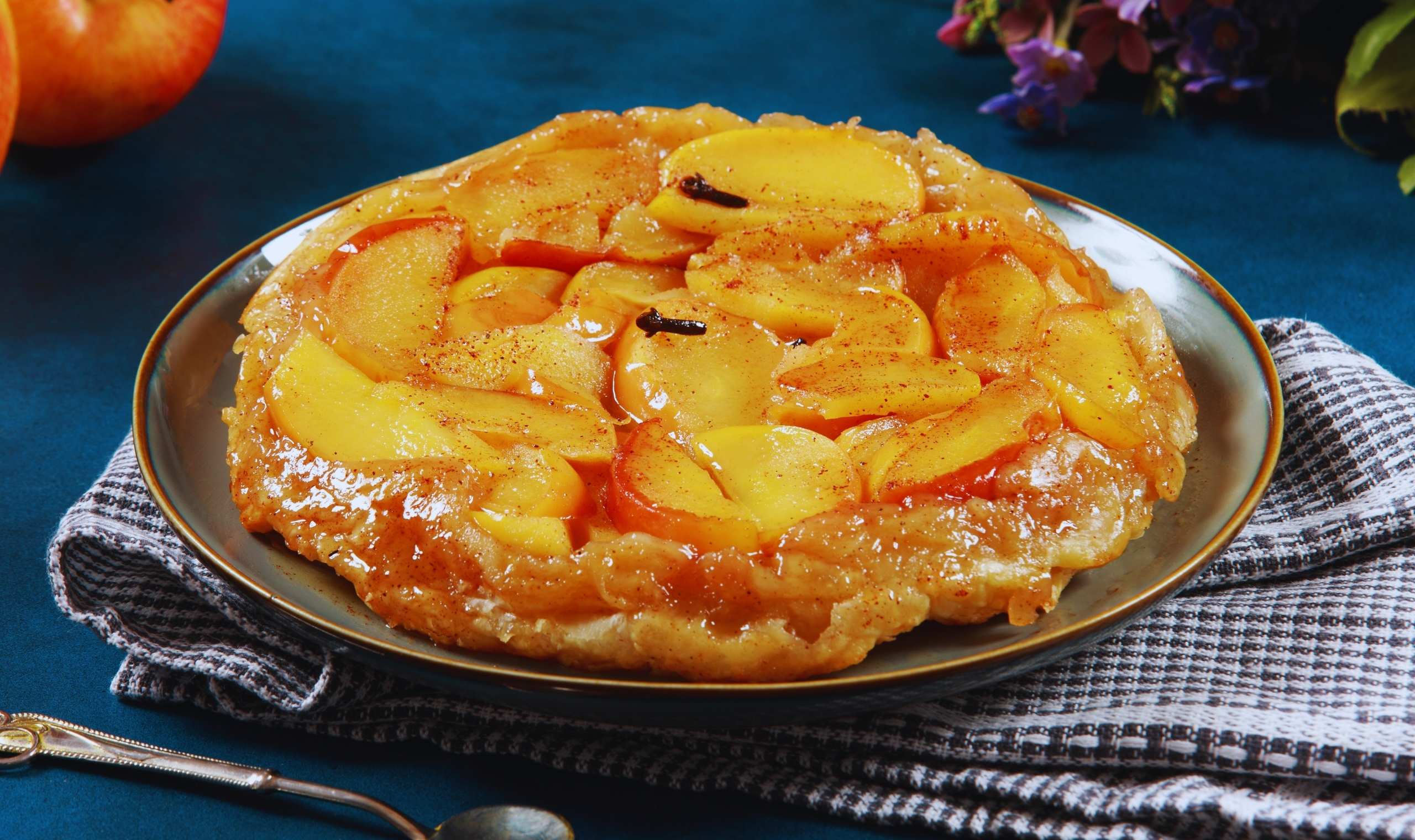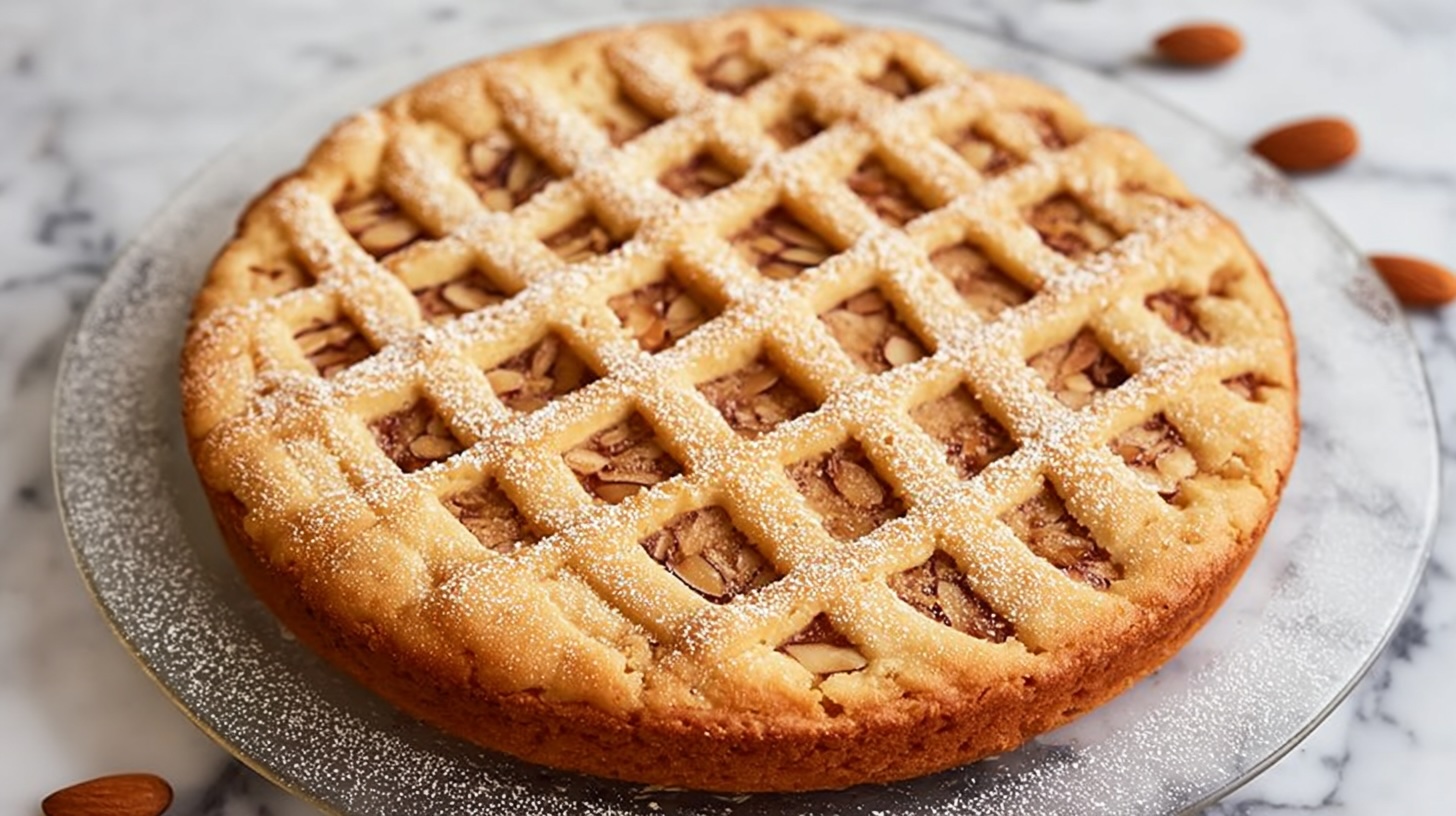Tarte Tatin: The Upside-Down Caramelized Apple Tart
The Origins of Tarte Tatin
Tarte Tatin is a classic French dessert that has garnered worldwide acclaim for its delectable blend of caramelized apples and pastry. Its intriguing history dates back to the late 19th century in the small town of Lamotte-Beuvron, where two sisters, Stéphanie and Caroline Tatin, were at the helm of a local hotel. It is within the walls of this quaint establishment that the creation of this iconic upside-down tart occurred, owing much to both creativity and a touch of serendipity.
The story of Tarte Tatin is often recounted as one of those delightful kitchen mishaps. Legend has it that one day, Stéphanie, distracted by other culinary demands, inadvertently allowed the apples to caramelize excessively in butter and sugar. In a moment of desperation and innovation, she covered the burnt apples with a layer of pastry and placed it in the oven. When served, she flipped the tart upside-down, revealing a beautifully caramelized topping that was both visually appealing and irresistibly delicious. This simple but profound incident marked the beginning of what would become a beloved dessert.
As word spread about the unique flavor profile of Tarte Tatin, it quickly evolved from a humble local dish to a fixture in French cuisine. Its preparation typically favors golden, tart apples, which balance the sweetness of the caramel. Traditionally served warm, this delightful dessert often accompanies a dollop of crème fraîche or a scoop of vanilla ice cream, enhancing its richness and inviting warmth. The Tatin sisters’ culinary experiment has since become a staple in bistros and restaurants, continuing to charm dessert lovers and solidifying its place in the pantheon of classic French desserts.
The History of Tarte Tatin
Tarte Tatin, a delicious upside-down apple tart, boasts a rich and intriguing history that dates back to the late 19th century in France. According to popular accounts, the dessert was the accidental creation of the Tatin sisters, Stéphanie and Caroline, who ran a hotel in Lamotte-Beuvron, a small town near Orléans. The tale goes that one day, while preparing a traditional apple pie, Stéphanie overcooked the apples in caramelized sugar and, in an effort to salvage the dish, placed the pastry on top and baked it upside down. When the pie was flipped, the result was a beautifully caramelized tart that has since become a staple in French cuisine.
The originality of Tarte Tatin quickly captured the hearts and palates of many, leading to its popularity beyond the sisters’ hotel. Its fame began to spread across France, earning a place on menus in various establishments, and eventually reaching international culinary acclaim. This unique dessert is representative of rustic French cooking, showcasing simplicity that is elevated by the care and technique involved in its preparation.
As time progressed, Tarte Tatin became synonymous with French culinary tradition and elegance. Renowned chefs adopted this dish, transforming it into a gourmet item featured in upscale restaurants around the world. Its inclusion in culinary events such as baking competitions has further solidified its status as not only a beloved dessert but also a symbol of French gastronomy. Tarte Tatin’s journey from a humble home kitchen to a signature dessert reflects the evolution of French cuisine itself, encapsulating the timeless combination of innovation and technique that defines the nation’s culinary identity.
In summary, the history of Tarte Tatin is as layered and complex as the dish itself, illustrating its transformation from a serendipitous creation to a celebrated component of French patisserie, admired by food enthusiasts globally.
Recipes for Tarte Tatin
Tarte Tatin, the beloved upside-down caramelized apple tart, can be prepared in various styles, catering to traditional tastes or modern culinary trends. Below are several recipes, each with unique interpretations of this classic French dessert.
Classic Tarte Tatin: Begin with 6 firm apples, such as Granny Smith or Braeburn. Preheat your oven to 350°F (175°C). Peel and core the apples, then cut them in half. In a 9-inch cast-iron skillet, melt 6 tablespoons of unsalted butter and add 3/4 cup sugar over medium heat. Cook until the sugar dissolves and turns light caramel in color, approximately 8-10 minutes. Carefully arrange the apple halves cut-side down in the skillet, cooking for another 10 minutes. Cover the apples with a 1-2 sheets of puff pastry, tucking the edges in. Bake for 25-30 minutes until the pastry is golden. Allow to cool for a few minutes before inverting onto a plate.
Modern Vegan Tarte Tatin: For a plant-based version, substitute butter with coconut oil and use maple syrup instead of sugar. You’ll need the same quantity of apples; follow the same cooking technique, ensuring the skillet remains well greased. After inverting, serve with a dollop of vegan whipped cream or dairy-free ice cream.
Gluten-Free Tarte Tatin: For a gluten-free option, replace traditional puff pastry with a gluten-free puff pastry or even a homemade almond flour crust. Use the same method to prepare the caramel and apples. Remember to be careful while transferring the apple mixture onto the gluten-free crust to maintain its shape.
Regardless of the recipe chosen, the key to an exquisite tarte tatin lies in the balance between sweet caramelization and the flaky texture of the pastry. There are countless interpretations, allowing for creativity while still respecting the essence of this charming dish.
Jokes and Fun Facts About Tarte Tatin
Tarte Tatin, often celebrated for its delightful combination of caramelized apples and flaky pastry, has not only won the hearts of pastry lovers but has also sparked a wealth of humor and fun anecdotes in the culinary world. For instance, did you hear about the baker who tried to flip the Tarte Tatin before it was ready? They ended up with a real “tarte turn-tin’!” This pun highlights the essential skill of timing and the element of surprise inherent in making this iconic dessert.
Another amusing twist is the story of a chef who attempted to impress guests with his cooking skills by preparing a tarte tatin from memory. He started confidently but ended up with a result that resembled more of a “tarte fallen” than the classic upside-down tart. This incident showcases how even seasoned chefs can have their moments of vulnerability when faced with the intricacies of this dessert.
Moreover, Tarte Tatin has been a conversation starter at many gatherings. When a friend placed their freshly baked tart on the table, someone quipped, “Looks like we’ve got a case of ‘upside-down thinking’!” This witty remark reflects how the unconventional nature of this dish—baking it upside down before flipping it over—invites creativity and humor in conversations about food.
In addition to the lighthearted quips, a fun fact about Tarte Tatin is that it was reportedly created by mistake in the late 19th century at the Hotel Tatin in Lamotte-Beuvron, France. The original recipe was a result of an error by the proprietor, Stephanie Tatin, who intended to make a traditional apple pie but instead left the apples cooking in butter and sugar for too long. This delightful mishap has since evolved into a beloved classic, and the tale behind it adds to the charm of enjoying a slice of velvety, caramelized goodness.
Tarte Tatin Variations From Around the World
The classic tarte tatin, characterized by its deliciously caramelized apples and flaky pastry, has inspired numerous regional adaptations across the globe. Each culture has put its unique spin on this delightful dessert, resulting in creative variations that showcase different fruits, flavors, and techniques. Exploring these diverse interpretations not only highlights the versatility of the tarte tatin but also invites home cooks to experiment in their own kitchens.
One notable variation is the use of pears in place of apples, which can be found in French regions where pears are abundant. The sweetness of ripe pears combined with a hint of nutmeg creates a different yet equally delightful experience. In Italy, a version known as “torta di mele rovesciata” incorporates a blend of spices, such as cinnamon and clove, enhancing the flavor profile and adding a warm aroma to the dish. The use of local fruits, like figs or quinces, adds depth and character without sacrificing the essence of the dish.
In the United States, the tarte tatin often features a combination of apples and cranberries, giving the dessert a tangy touch that contrasts beautifully with the sweetness of the caramel. Additionally, some bakers experiment with scone or biscuit crusts instead of the traditional puff pastry, resulting in a heartier version that pairs well with whipped cream or ice cream. Asian adaptations have emerged as well, such as the use of mango or lychee, bringing tropical flavors into the mix.
As the tarte tatin continues to evolve, home bakers are encouraged to take inspiration from these variations and challenge the traditional boundaries. Whether it’s using seasonal fruits or experimenting with spices, the potential for innovation is limitless, making tarte tatin a versatile dessert suitable for any occasion.
Where to Buy Tarte Tatin
For those who wish to indulge in the exquisite taste of tarte tatin, several venues around the world are notable for their authentic offerings. France, being the birthplace of this delectable upside-down caramelized apple tart, is obviously the premier destination. In Paris, renowned patisseries such as La Pâtisserie des Rêves and Jacques Genin serve exceptional versions of this classic dessert. Their meticulous preparation and quality ingredients make these locations must-visit stops for any tarte tatin enthusiast.
Outside of France, many high-end restaurants across the globe boast their own interpretations of this traditional pastry. In New York City, for instance, Balthazar restaurant is celebrated for its rich and flavorful tarte tatin, characterized by the perfect balance of sweetness and acidity. Similarly, restaurants like La Boulangerie in San Francisco offer an authentic experience that mirrors the traditional recipes from its French counterparts, ensuring a delightful tasting experience.
In addition to patisseries and restaurants, there are reputable online retailers that specialize in gourmet foods, including tarte tatin. Websites such as Goldbelly curate selections from some of the finest pastry chefs and bakeries across the United States. Customers can conveniently order a freshly made tarte tatin and have it delivered straight to their doorstep, making it accessible to anyone eager to taste this delightful dessert, regardless of their location.
Lastly, local bakeries may also feature homemade versions of tarte tatin, especially those with a focus on French pastries. Searching for establishments with good reviews and a reputation for quality baked goods could lead one to a hidden gem in their community. With such a variety of options available, both locals and travelers alike have multiple avenues for enjoying the rich, buttery flavor of tarte tatin.
The Perfect Pairings for Tarte Tatin
When it comes to enjoying the quintessential experience of tarte tatin, selecting the right accompaniments can significantly enhance its rich and caramelized flavors. This delightful upside-down apple tart, with its buttery crust and sweet, caramelized apples, is best complemented by several thoughtfully chosen pairings that elevate the dessert experience.
One classic accompaniment for tarte tatin is a scoop of vanilla ice cream. The creaminess of the ice cream beautifully balances the sweetness of the dessert, providing a refreshing contrast to the warm, rich tart. As the ice cream melts into the warm apples, it creates a delightful blend of textures and temperatures that can take your dessert to the next level. Alternatively, crème fraîche adds a tangy richness that can counterbalance the sweetness, making it another excellent choice. The slight acidity of crème fraîche can help cut through the density of the tarte, resulting in a perfectly harmonious bite.
For those seeking a more sophisticated pairing, consider serving tarte tatin with a dessert wine. Sauternes, a sweet French wine, pairs exceptionally well with this caramelized apple tart, echoing its flavors and enhancing the overall experience. The golden hue and honeyed notes of Sauternes can mirror the caramel notes found in the tarte, creating a synergy that is hard to resist. If you favor a sparkling option, a demi-sec Champagne can also offer a delightful match, providing a palate-cleansing effervescence after each rich bite.
Lastly, incorporating seasonal fruits as garnishes can add both visual appeal and additional flavors to your dessert plate. Fresh berries, for instance, add a tartness that contrasts nicely with the sweetness of the tarte tatin. By carefully selecting these accompaniments, you can create a balanced and delightful dessert plate that enhances the enjoyment of this classic French dessert.
Culinary Techniques Behind a Perfect Tarte Tatin
Mastering the art of making a perfect tarte tatin requires an understanding of key culinary techniques that lend the dish its signature flavor and texture. The foundation of this upside-down caramelized apple tart lies in achieving an impeccable caramel sauce. To create this, one must begin with quality ingredients. Using granulated sugar, complemented by a touch of water, allows for a controlled caramelization process. It is advisable to heat the mixture gently, monitoring as the sugar dissolves and turns a rich amber color while avoiding any burnt notes that can overshadow the tart’s delicate sweetness. The addition of unsalted butter at the right moment enhances the sauce’s richness, providing a delightful contrast to the tart apples.
When selecting apples, it is critical to choose varieties that hold their shape during cooking. Firm apples like Granny Smith or Honeycrisp are excellent options, as their acidity balances the sweetness of the caramel and complements the overall flavor profile. Peel and core the apples before slicing them into halves or quarters, ensuring they fit snugly in the pan. Arranging the apple pieces in a circular pattern allows for even cooking and maximum caramel coverage.
Another pivotal technique in crafting an exceptional tarte tatin is the baking process. A common pitfall is ending up with a soggy crust, which can detract from the dish’s allure. To mitigate this, it is recommended to blind-bake the pastry for a short period before assembling the tart. This pre-baking step creates a barrier that minimizes moisture absorption. Using a thicker pastry, such as pâte brisée, can also help retain structure while allowing for a more satisfying crunch when sliced.
With attention to detail in these techniques, home cooks can avoid common mistakes and elevate their tarte tatin to new heights, creating a stunning dessert that embodies both flavor and finesse.
Cultural Significance of Tarte Tatin
The tarte tatin, a beloved pastry from France, holds a prominent place in the country’s culinary heritage and cultural fabric. Known for its unique preparation method, where apples are caramelized before being enveloped in a buttery pastry crust, this dessert is not merely a sweet indulgence but a symbol of French tradition. Its origins date back to the late 19th century, stemming from a fortuitous mistake made by the Tatin sisters in the Loire Valley. This fortuity has since turned into a culinary legend, enhancing the tarte’s appeal and accentuating its role in French gastronomy.
In contemporary French culture, the tarte tatin is a staple during family gatherings and celebratory events. French families often prepare this dish during autumn, when apples are in season, and are plentiful. The evocative aroma of caramelized fruit wafting through homes evokes a sense of nostalgia, fostering connections between generations. Social occasions, from casual dinners to festive feasts, frequently feature this iconic dessert, highlighting its versatility and adaptability in festive menus.
Moreover, the tarte tatin embodies a narrative of resilience and creativity, reflecting the spirit of French cooking. It represents the idea of transforming simple ingredients into something extraordinary, which mirrors broader themes of resourcefulness in French culinary practices. As the tart gained recognition beyond its place of origin, it became a symbol of French culinary prowess, thus enriching its cultural narrative. Furthermore, its inclusion in various regional cuisines underscores the localized variations of this dessert, providing opportunities for conversations around heritage, identity, and local gastronomies. Ultimately, the tarte tatin does not simply satisfy a sweet tooth; it weaves a rich tapestry of cultural storytelling that resonates deeply within French society.



